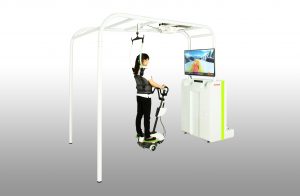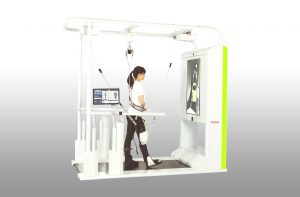Toyota Rehabilitation Robots Begin Clinical Trials
Toyota robots are being put to work in hospitals, helping in the rehabilitation of patients with mobility and balance problems. The Walk Training Assist and Balance Training Assist partner robots have started clinical trials that will extend to more than 30 medical facilities across Japan.
Development of the robots began in 2007, in collaboration with the Fujita Health University Hospital in Toyoake. The equipment was readied for testing in May this year and the first robots were installed today in the Ukai Rehabilitation Hospital in Aichi prefecture, close to Toyota Motor Corporation’s headquarters.
The large-scale trials will help in evaluating the effectiveness of the robots. Toyota is accelerating their development with aim of a commercial launch at the earliest opportunity.
Walk Training Assist Robot
- Provides support from the early stages of rehabilitation so that people suffering lower limb paralysis can train to walk normally.
- Attached to a paralysed leg, this robot helps the user swing the leg forwards, while helping straighten the knee and supporting the user’s weight.
- The leg mount has a lifting mechanism which reduces the weight burden of the robot on the user.
- The level of robot assistance can be varied, according the degree of rehabilitation required.
- Main modifications: –
- The joint angle and other walking data are monitored to provide real-time feedback on performance to the user, via audio and video.
- A new mechanism allows for faster attachment.
- Dimensions: width 1,155mm, length 2,560mm; height 2,345mm.
See the Walk Training Assist Robot in action here
Balance Training Assist Robot
- Supports people unable to maintain balance in an enjoyable rehabilitation process that used a video game-style presentation.
- Uses the same inverted two-wheel technology that is also featured on Toyota’s Winglet personal transport assistance robot. The user’s forward/back and left/right body movements are linked to a character in the video game.
- Tennis, skiing and rodeo game modes are available, helping train the user in shifting their centre of gravity in different directions while keeping their balance.
- The level of game difficulty is automatically set in line with the degree of rehabilitation required.
- Dimensions: width 1,935mm; length 1,860mm; height 2,350mm.





